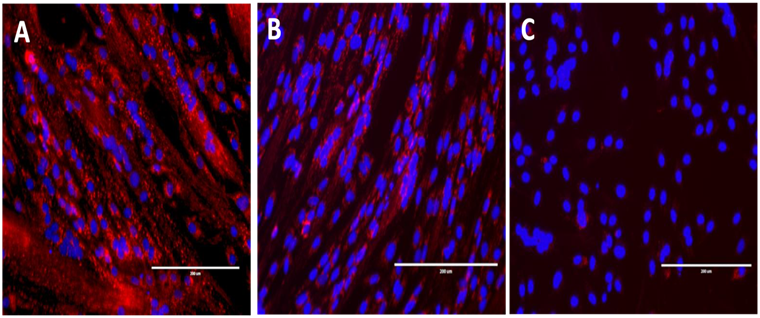Host-tumor interactions in Head and Neck carcinomas
This group belongs to the UMR 9018 - Metabolic and systemic aspects of oncogenesis for novel therapeutic approaches (Metsy)
Our research is mainly oriented towards host-tumor interactions envisioned at the scale of the whole organism (tumor macro-environment). A first series of studies aims to elucidate the mechanisms of several deleterious effects exerted remotely by malignant cells: inhibitory effects on the immune system and induction of muscle atrophy. A second series of works is more oriented towards therapeutic applications: it aims to produce and characterize new recombinant adenoviruses to promote tumor destruction while minimizing systemic adverse effects.
A - First part: remote effects of malignant cells on the immune system and skeletal muscles (P. Busson, T. Ragot)
For the last 10 years, most research projects carried in P. Busson’s group have been focused on extracellular galectin-9 (gal-9), a protein with immunosuppressive activity, often produced inappropriately by malignant cells, in particular in certain Head and Neck carcinomas (HNCs)(Baloche et al., Sci Rep 2021; doi.10.1038/s41598-021-84270-1)(Tran et al., Oncoimmunology 2022; doi: 10.1080/2162402X.2022.2150472). However, the effects of extracellular gal-9 are not entirely immunosuppressive. Recent results indicate that it may play a role in the development of germinal centers (Tran et al., manuscript in preparation). One extension of our experimental and translational research on gal-9 is the development of a neutralizing antibody for therapeutic purposes. It is carried out in collaboration with two companies, HiFibiO Therapeutics and FibroGen, on the basis of a patent in which our group holds about 50% of the inventive shares (W02015185875A3) (Lhuillier et al., Plos One 2018; doi: 10.1371/journal.pone.0202512).
More recently, we became interested in the mechanisms of muscular atrophy or sarcopenia which is very common in the context of HNCs. It is a factor of poor prognosis which often prevents the implementation of potentially effective anti-tumor treatments (chemotherapy, immunotherapy…). Our study is based both on in vitro co-culture experiments and on the use of small muscle fragments collected during surgery in patients with HNCs. Thus, we were able to observe similar transcriptional alterations in muscle cells co-cultured with malignant cells in vitro and in muscle fragments from patients presenting with a sarcopenic state (H. Hachicha and I. Baïche, manuscript in preparation).
B - Development of viral antitumor strategies (K. Benihoud, S. Dupré-Crochet and T. Ragot)
The first line of research aims to better understand the interactions of different adenoviral serotypes with host cells, both malignant cells and those of the immune system. We are particularly interested in the interactions of different adenovirus serotypes with neutrophils. Indeed, if the interaction of neutrophils with bacteria and fungi is well studied, few studies have focused on the interaction of neutrophils with viruses. In particular, our work seeks to better understand the reciprocal interactions between adenoviruses and neutrophils and to assess whether neutrophils influence anti-adenovirus immunity. In this first line of research, we are also interested in the development of new adenoviral vectors allowing better targeting of tumor cells. Finally, we are exploring the use of electric fields to increase adenovirus penetration into insensitive cells (Tesse et al. Sci Rep 2021; doi: 10.1038/s41598-021-96781-y).
The second line of research aims to assess the ability of oncolytic adenoviruses to stimulate anti-tumor immune responses in Head and Neck carcinoma models. This immunovirotherapy approach exploits the ability of oncolytic adenoviruses to selectively replicate in malignant cells and release tumor antigens to induce anti-tumor immune responses.
The third line of research aims to develop vaccination approaches based mainly on the exposure of antigens on the surface of viral capsids. Thus, we have shown that adenoviruses carrying epitopes inserted into their capsid proteins generate strong humoral and cellular immune responses (Anchim et al. Frontiers in Immunology 2018; doi: 10.3389/fimmu.2018.00124). More recently, as part of a collaboration with the team of Pascale Boulanger (CNRS, I2BC CNRS UMR 9198), we showed that phage capsids displaying a model antigen on their surface induced strong immune responses against this antigen (patent WO2021053309, Vernhes et al. submitted). Our current work aims to analyze the ability of these vaccine platforms to induce immune responses in Head and Neck carcinoma models.

Inhibition of muscle cell differentiation by indirect co-culture (Transwell system) with malignant Head and Neck carcinoma cells.
The immortalized human myoblasts were incubated alone (A), in the presence of normal keratinocytes (B) or in the presence of malignant cells (C). The Hoechst 33342 (blue) and Mitotracker (red) stains allow the detection of nuclei and mitochondrial activity, respectively. A strong inhibition of the differentiation of the muscle cells is observed when they are incubated with the tumor cells (absence of alignment of the nuclei and of staining by the Mitotracker)(C). The inhibition of differentiation is much less marked in the presence of normal keratinocytes (B). Scale bar = 200 µm.
